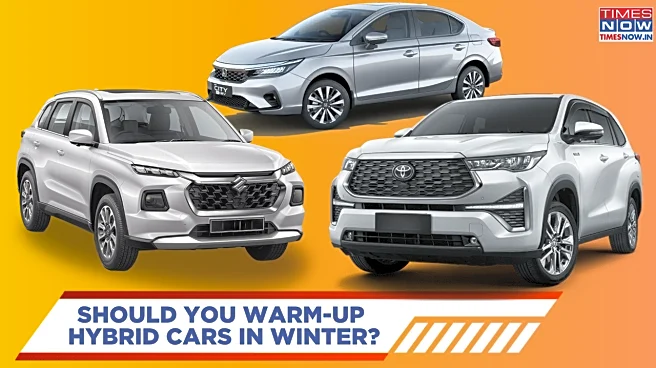There are several 'good practices' that we are taught as new drivers when we learn how to drive or ride a car or a two-wheeler. These include several tips to follow to keep our vehicles in tip-top shape,
get the best mileage and keep the maintenance bills low. One such habit is the warm-up idle when we first start our vehicle in the morning, also referred to as a cold start. While the logic was true for older carburetted cars, it has been contested since modern cars started having electronic fuel injection. However, we now also have strong hybrid cars like the Maruti Suzuki Victoris, Toyota Hyryder, Camry, or Honda City eHEV, that may further complicate the dilemma around warming up your vehicle on a cold start. Here's a quick explainer on things to consider.
Also Read: These 4 Porsche Cars Are Most Reliable According To Consumer Reports
The traditional warm-up theory was based on the logic that, upon a cold start, it is important to let the engine warm up and allow all important fluids and oils to circulate and lubricate important components for optimum operation without any premature wear and tear. However, experts argue that advanced engine design and the latest generation of lubricants have eliminated the need for warm-up in modern vehicles. That is because the modern electronic fuel injection system is capable of modulating the vehicle's fueling to suit all conditions and maintain optimum engine operation despite the temperature conditions.
Hybrids Don't Start Up Like Traditional Cars. What About Them?
The debate gets more confusing in the case of hybrid cars, as their startup process is different from traditional petrol or diesel-powered cars that derive power solely via the engine. A strong hybrid vehicle usually starts up on electric power and triggers its ICE engine for power periodically. However, the answer is simple. Modern ICE and hybrid cars do not require an extensive warm-up period. This is because newer cars have advanced engine management systems that help bring the temperature up to optimal levels while driving in a short period since startup.
In fact, extensive warm-up time for your strong hybrid car could have a negative effect on its mileage, as the vehicle will switch to ICE mode after starting up in EV mode briefly. This would unnecessarily burn fuel on a standstill, while you could have been driving along the whole time. While some ICE vehicle owners may still insist on having a short period of warm-up before starting their drive, it just does not make any sense for owners of self-charging hybrid cars like the Maruti Suzuki Grand Vitara or Toyota Innova Hycross.
Keep reading Times Now Auto for more updates and useful tips on car ownership in the modern era.

















